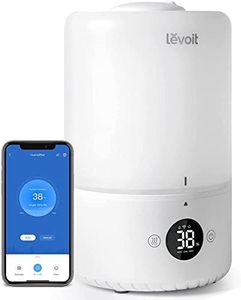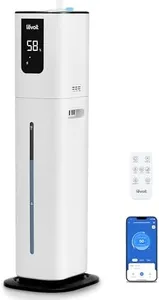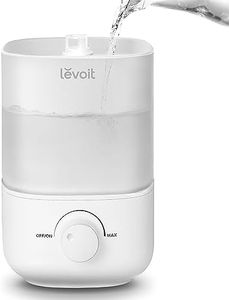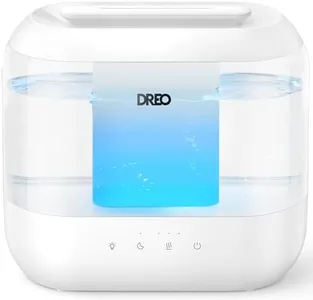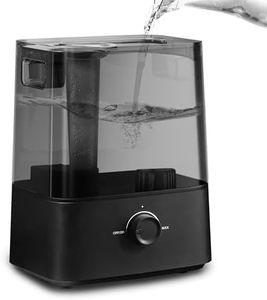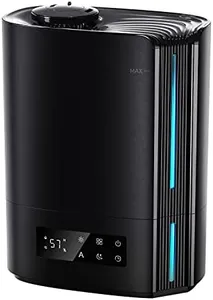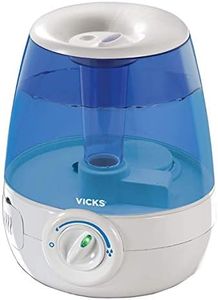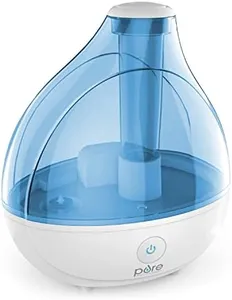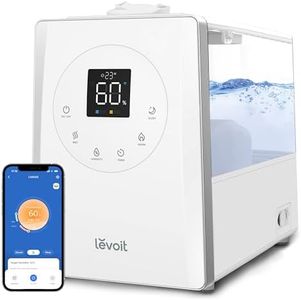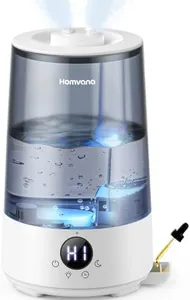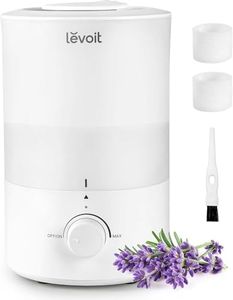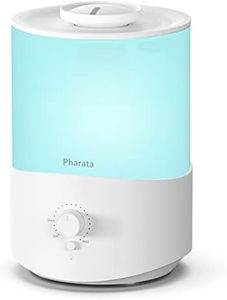We Use CookiesWe use cookies to enhance the security, performance,
functionality and for analytical and promotional activities. By continuing to browse this site you
are agreeing to our privacy policy
10 Best Humidifiers
From leading brands and best sellers available on the web.Buying Guide for the Best Humidifiers
Choosing the right humidifier can make a big difference in your comfort, especially during dry seasons or in air-conditioned spaces. The main goal is to add moisture to the air, which can help with dry skin, irritated sinuses, and even protect wooden furniture. To find the best humidifier for your needs, it's important to understand the key features and how they relate to your living space and lifestyle.Room Size CoverageRoom size coverage tells you how large of an area the humidifier can effectively add moisture to. This is usually measured in square feet or meters. Small units are best for bedrooms or offices, medium ones for living rooms, and large units for open spaces or multiple rooms. To pick the right one, measure your room and match it to the humidifier’s coverage. If you use a small humidifier in a big room, it won’t be effective, while a large one in a tiny room might make the air too damp.
Water Tank CapacityWater tank capacity is the amount of water the humidifier can hold, usually measured in liters or gallons. A larger tank means the humidifier can run longer without needing a refill, which is convenient for overnight use or busy days. Smaller tanks need more frequent refilling but are lighter and easier to move. If you want to run your humidifier all night or in a big room, look for a larger tank. For short, occasional use or small spaces, a smaller tank may be enough.
Type of HumidifierThere are several types of humidifiers: ultrasonic, evaporative, and steam (warm mist). Ultrasonic models use vibrations to create mist and are usually quiet and energy-efficient. Evaporative ones use a fan to blow air through a wet wick, which is good for larger spaces and self-regulates humidity. Steam humidifiers boil water to create warm mist, which can help with colds but uses more energy. Your choice depends on your noise preference, energy use, and whether you want cool or warm mist.
Noise LevelNoise level is how much sound the humidifier makes while running. This is important if you plan to use it in a bedroom, nursery, or office. Ultrasonic humidifiers are usually the quietest, while evaporative and steam models can be a bit louder due to fans or boiling water. If you’re sensitive to noise or need a humidifier for sleep, look for models that are specifically labeled as quiet or have a decibel rating provided.
Ease of CleaningEase of cleaning refers to how simple it is to take apart and wash the humidifier. Regular cleaning is important to prevent mold and bacteria growth. Some models have wide openings and fewer parts, making them easier to clean, while others may have small crevices that are harder to reach. If you want to avoid frequent, complicated cleaning, look for a design that’s easy to disassemble and has dishwasher-safe parts if possible.
Humidity ControlHumidity control means the ability to set or adjust the desired humidity level. Some humidifiers have built-in humidistats that automatically turn the unit on or off to maintain your chosen level, while others have manual controls. Automatic control is helpful if you want to set it and forget it, while manual models require more attention. If you want consistent comfort and less hassle, look for a humidifier with automatic humidity control.
Filter RequirementSome humidifiers use filters to trap minerals and impurities, while others are filter-free. Filters can improve air quality but need regular replacement, which adds to maintenance. Filter-free models are easier to maintain but may require more frequent cleaning. If you want cleaner mist and don’t mind changing filters, choose a model with a filter. If you prefer less maintenance, a filter-free design might be better.
